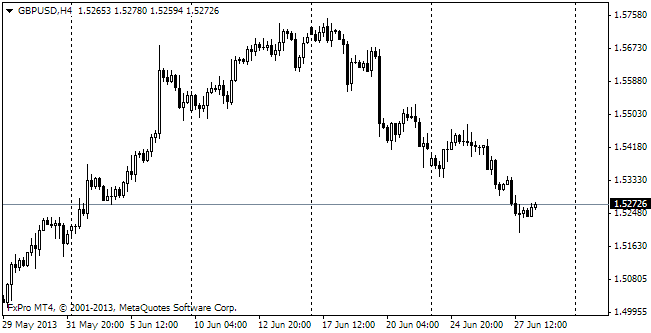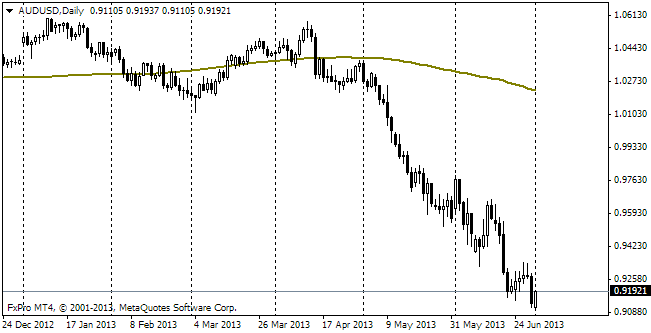EUR/usd
Italy is again suffering recession. It became obvious after yesterday's release of the Prelim PMI data for the second quarter. The statistics indicated the economic slowdown by 0.2% in 2Q after the decline by 0.1% in 1Q. Actually, over the last three years Italy reported only one quarter of growth – the last quarter of 2013. All the rest of the time the economy was suffering sluggish weakening. Even some decrease in the unemployment rate since the beginning of the year doesn't save the situation. 12.3% is still too high to rely on the growth of consumer activity. Even the foreign trade rates, which have significantly improved in the recent months, are not able to fight the general sluggishness of the economy yet. It is seen by the country's Retail PMI, which still keeps falling. The index fell down to 43.4. The same index for the entire eurozone also dipped down to 47.6 against 50.0 a month ago. The only exception in the series of these dreadful statistic reports was Germany's statistics, but this EU locomotive can hardly pull out the heavy rest of the train. That news again inspired bears yesterday. They pushed the single currency down to 1.3332, but then followed a pullback which raised the pair by half a figure up. The positive statistics on the US foreign trade were ignored by the market and therefore didn't affect the course of trading much. In June the trade deficit fell down to 41.4bln against 44.66bln in May and expectations approximately in this area.
GBP/USD
The British Industrial Production grew by 0.3% in June, which is twice as low as expected. Besides, the annual growth rate slowed down to 1.2% against the supposed 1.5% and the preceding 2.3%. Considering these data, NIESR calculated that the GDP growth in the three months to July made 0.6%, which is the lowest rate in the year. It is serious weakening after 0.8% in the three months to June and April's high of 1%. The sterling is still supported on falling below 1.6820. However, it will have to stand a test by the announcement of the rate decision and also by the US weekly unemployment claims.

USD/JPY
Yesterday the yen surprisingly was in good demand. Russia's decision regarding retaliatory sanctions, and resumed military exercises a thousand kilometers away from Ukraine, and messages about concentration of the military forces on its border provoked risk-aversion (leverage reduction). This movement manifested itself not only in the decline of usdjpy from 102.60 to 101.70, but also in the growth of gold prices. This precious metal has appreciated from 1287 to 1305 during the day.

AUD/USD
The Australian unemployment has grown to 6.4%. The current rate is the highest over the last 10 years, mainly due to the growth of the labour force. The employment hasn't changed much against the expectations of growth. The signs of stabilization in the labour market haven't paid off. AUD has dropped to the lows of late June. The bulls have been punished.
